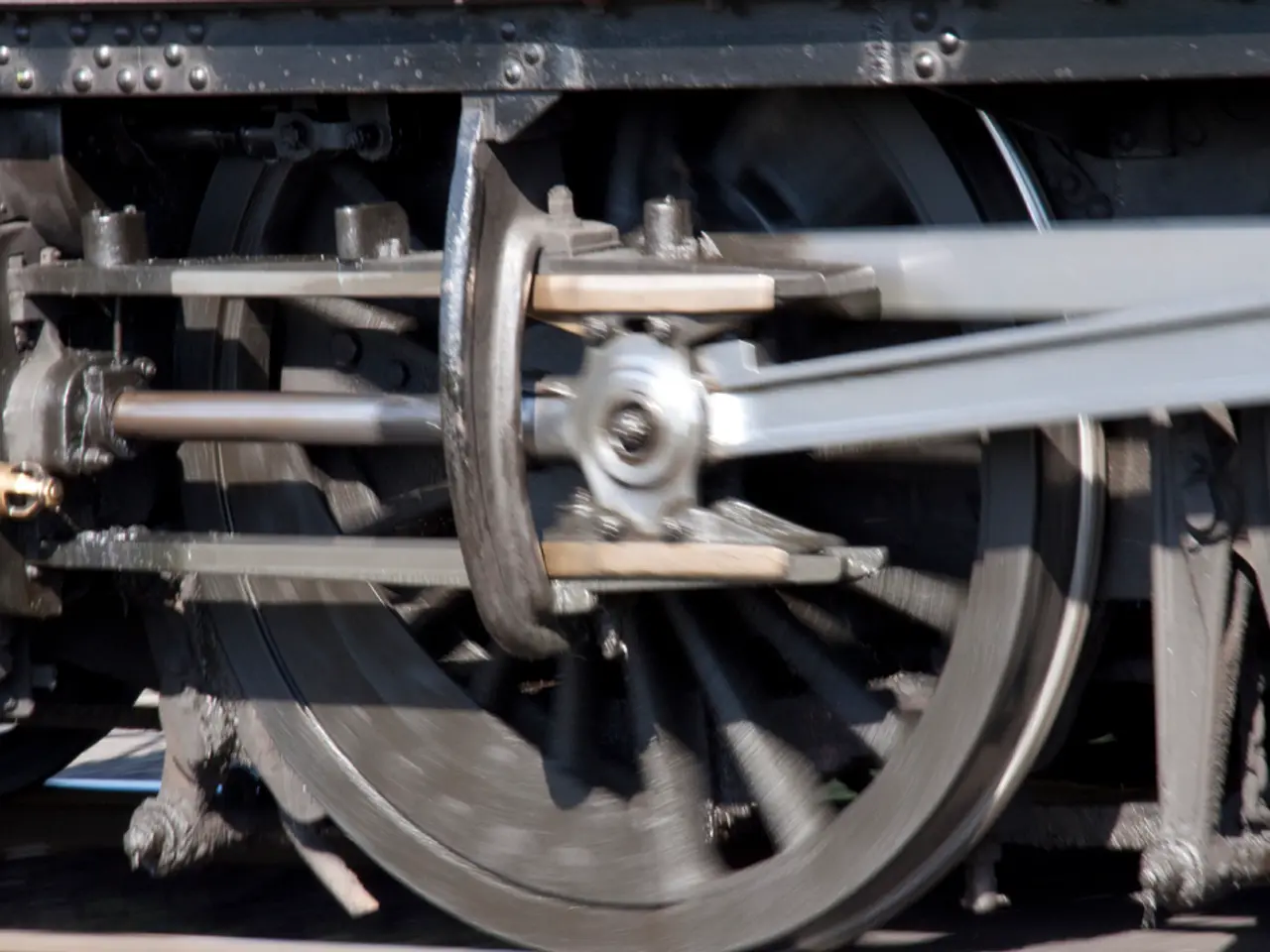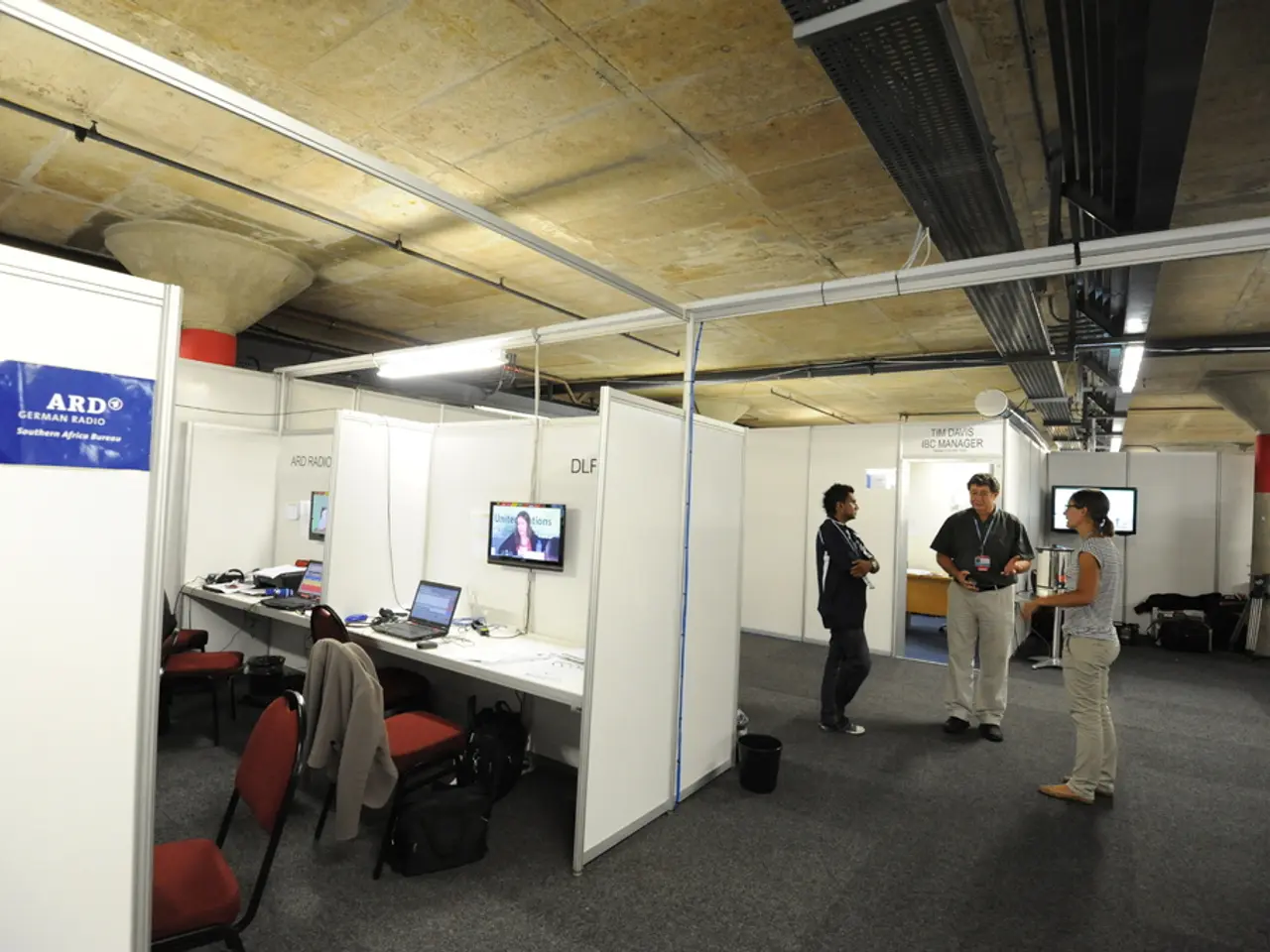Cement-laden freight train from Punjab reaches Anantnag for the first time
First Freight Train Arrives in Kashmir Valley, Marking a Historic Milestone
On August 9, 2025, the first-ever freight train to the Kashmir Valley arrived at Anantnag Goods Shed, marking a significant milestone in connecting the region to the national freight network [1][2][4][5]. This historic event signifies the integration of Kashmir with the broader Indian railway freight system, reducing logistical barriers and demonstrating the readiness of the newly commissioned Anantnag Goods Shed to handle large-scale freight operations [1][4].
The freight train journey from Rupnagar, Punjab, covered approximately 600 kilometers and took less than 18 hours, carrying 21 wagons loaded with 1,380 metric tonnes of cement [1][4]. The arrival of the freight train marks the first-ever cement loading specifically for the Anantnag Goods Shed, signifying its readiness to support logistical and economic growth in the Kashmir region.
This milestone is not just a logistical achievement but a powerful symbol of progress and integration, paving the way for a more connected and prosperous Kashmir Valley. Union Railway Minister Ashwini Vaishnaw shared a picture of the first freight train on social media, stating that transportation by railway network will reduce costs for citizens living in the Kashmir valley [3]. Prime Minister Narendra Modi also lauded the arrival of the first freight train, stating it will enhance both progress and prosperity in Jammu and Kashmir [1].
The freight train's arrival could be beneficial for the fruit industry of Kashmir, as it could save time and bring down rates, allowing the fruit produced in Kashmir to reach various parts of the country more quickly [2][4]. The cement transported on this train will be used for crucial projects in the Kashmir Valley, including the construction of roads, bridges, public infrastructure, and residential housing [4]. The arrival of the freight train is expected to accelerate infrastructure projects and improve living standards for the people of Kashmir.
The freight train's arrival follows earlier railway milestones such as the inauguration of Vande Bharat passenger trains between Katra and Srinagar [2]. The logistics and transport infrastructure improvements coincide with ongoing construction and development projects in the Kashmir Valley that demand steady cement supplies [4]. The event suggests expanding freight capabilities and further infrastructure investments, strengthening the Valley’s economic foundation and mobility [1][4].
In summary, the successful arrival of the freight train is a breakthrough event advancing Kashmir’s logistical connectivity, lowering costs, and catalyzing economic growth, with the potential to transform local industries and infrastructure development substantially [1][2][4][5]. This milestone is a testament to the government's commitment towards enhancing connectivity and economic development in the region.
[1] Times of India, "First freight train arrives in Kashmir Valley from Punjab," August 9, 2025. [2] Indian Express, "Kashmir's first freight train arrives at Anantnag Goods Shed," August 9, 2025. [3] NDTV, "Union Railway Minister Ashwini Vaishnaw shares picture of first freight train to Kashmir Valley," August 9, 2025. [4] Hindustan Times, "First freight train to Kashmir Valley arrives at Anantnag Goods Shed," August 9, 2025. [5] Economic Times, "First freight train to Kashmir Valley marks historic milestone in connectivity," August 9, 2025.
The arrival of the freight train is expected to boost the economic growth of Kashmir by reducing costs for industries like the fruit industry [2]. The cement transported on this train will contribute to critical infrastructure projects such as road construction, bridge building, and housing development in Kashmir Valley [4].




